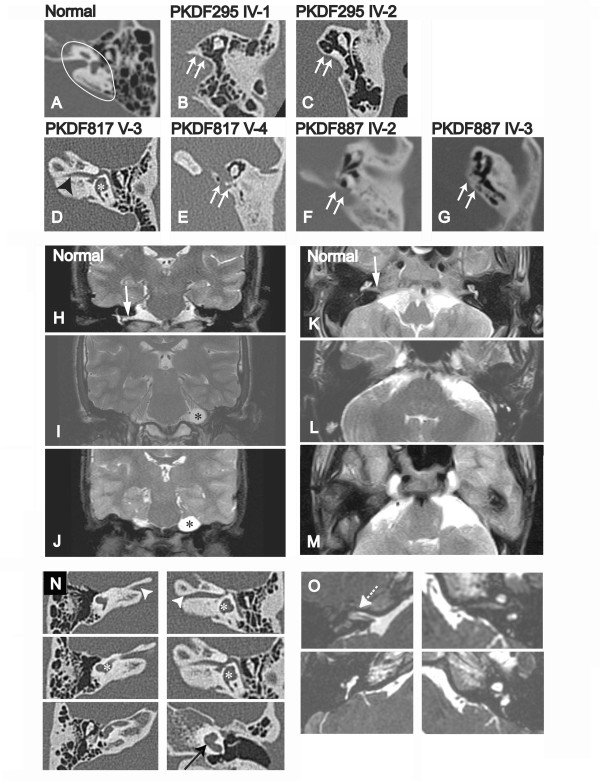Figure 3.
Radiological images from affected individuals with FGF3 homozygous mutations. Images (A through G) are axial temporal bone CT sections. (A) Inner ear structures (Internal auditory canal (IAC), cochlea, and vestibule) in petrous bone are clearly seen (white ellipsoid) in a normal subject. (B, C, E, F, and G) Complete labyrinthine aplasia with a flat medial wall (white arrows) of the middle ear cavity. (D) A narrow IAC (black arrowhead), posterior semicircular canal and vestibule (white asterisk) are visible. Images (H-J and K-M) are coronal and axial sections, respectively, of T2-weighted MR images (T2WI) of the cerebellopontine angle region. Affected individuals, PKDF295 IV-2 (I and L) and PKDF887 IV-3 (J and M) have a presumed subarachnoid cyst (black asterisk). The cochleovestibular nerve and inner ear structures (white arrow) detected in a normal subject (H and K) are not clearly seen in affected subjects (I, J and M). Images (N and O) are contiguous axial temporal bone CT sections and axial 3D-FIESTA MR images from PKDF817 V-3, respectively. (N) The osseous IAC (white arrowhead), vestibule (white asterisk), and 1-1/2 turns of the cochlea (black arrow) can be identified in the left ear. The vestibule and posterior semicircular canal are shown in the right ear. (O) The presence of a single cochleovestibular nerve (white dotted arrow) can be identified in the right side. Cochlea, vestibule and posterior semicircular canal are shown in the left ear.

